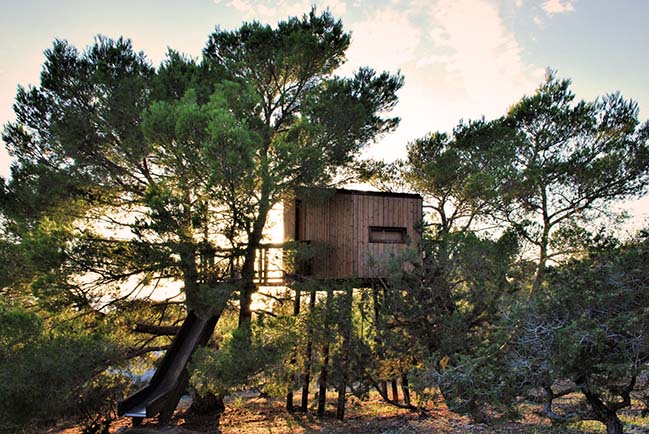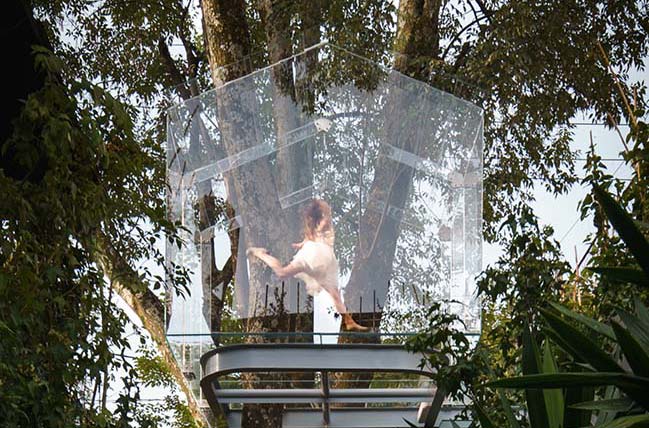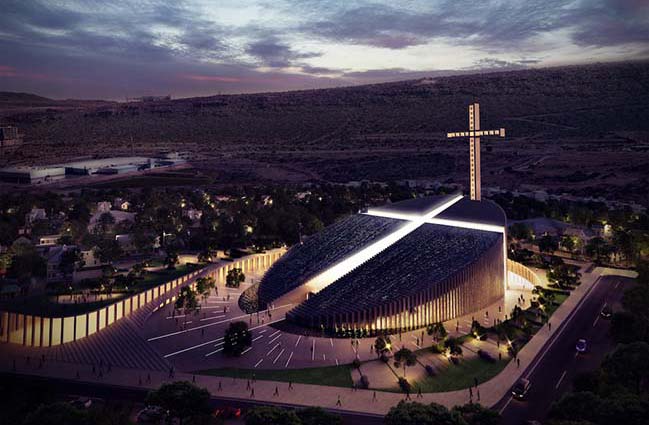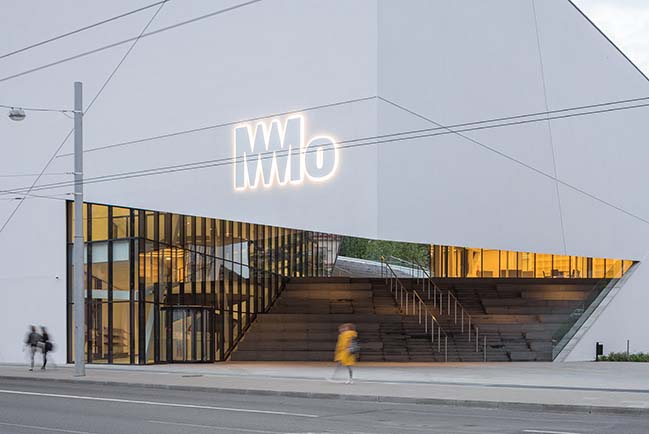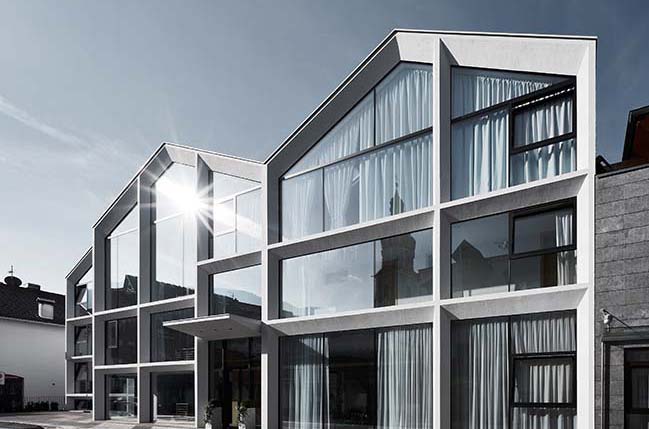10 / 31
2018
Constructed at the Museo Universitario Arte Contemporáneo (MUAC) in Mexico City as part of Zaha Hadid Architects’ first exhibition in Latin America, KnitCandela is an experimental structure that pays homage to the Spanish-Mexican architect and engineer Félix Candela. KnitCandela reimagines his inventive concrete shell structures through the introduction of new computational design methods and innovative KnitCrete formwork technology.
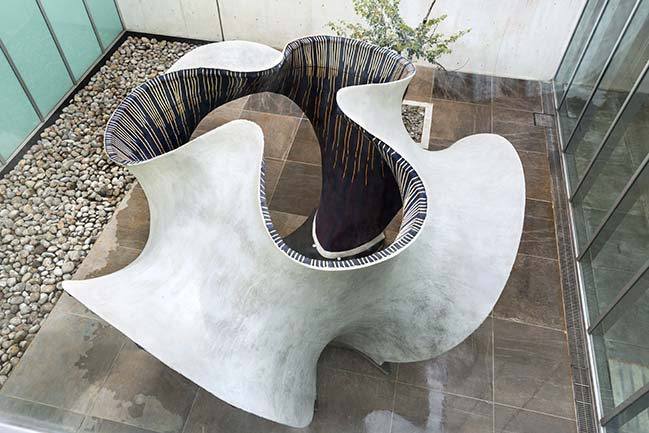
Architect: Zaha Hadid Architects
Location: Mexico City, Mexico
Year: 2018
Project Team: Block Research Group, ETH Zurich (BRG), Zaha Hadid Computation and Design Group (ZHCODE), Architecture Extrapolated (R-EX)
Photography: Juan Pablo Allegre, Leo Bieling, Philippe Block, Mariana Popescu
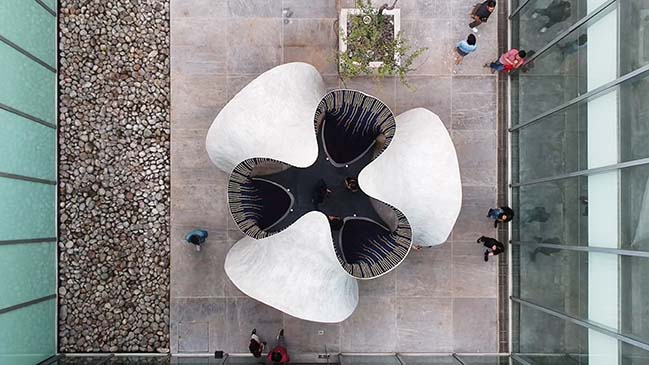
The dynamic geometry of KnitCandela’s shell is inspired by the fluid forms of the colourful traditional dress of Jalisco, Mexico. While the structure’s local builders nicknamed the project 'sarape' (a striped scarf that originated in Mexico), KnitCandela’s form references his acclaimed restaurant at Xochimilco; a concept he further developed in several of his subsequent projects.
While Candela relied on combining hyperbolic paraboloid surfaces (“hypars”) to produce reusable formworks leading to a reduction of construction waste, KnitCrete allows for the realisation of a much wider range of anticlastic geometries. With this cable-net and fabric formwork system, expressive, freeform concrete surfaces can now be constructed efficiently, without the need for complex moulds. KnitCandela’s thin, double-curved concrete shell with a surface area of almost 50 sq.m. and weighing more than 5 tonnes, was applied on a KnitCrete formwork of only 55 kg. The knitted fabric of the formwork system was carried to Mexico from Switzerland in a suitcase.
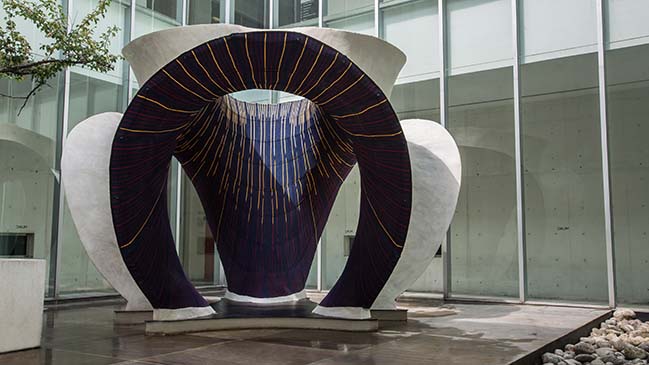
Collaboration
Designed and constructed by multiple teams in Europe and Mexico, the realisation of KnitCandela is the result of a collaborative effort that harnessed collective expertise in computational design, engineering and fabrication. The architectural design is the latest expression of the Zaha Hadid Architects’ computation and design research group (ZHCODE) for designs that utilise structural and constructional features to enhance the spatial experience of the user. For the realisation of this expression, Block Research Group (BRG) of ETH Zurich introduced the KnitCrete formwork technology and developed the structural design and construction system. Architecture Extrapolated (R-Ex) managed the execution of the project on site in Mexico City as part of its continued engagement in the digitisation of building trades in Mexico.
Designed to be constructed within a tight schedule, restricted space and minimal budget, KnitCandela demonstrates the rapid evolution and adaptation of digital design and fabrication to the challenges faced by the construction industry. This experimental structure also explores the possibilities of integrating digital fabrication with the skills of traditional craftsmanship and construction methods.
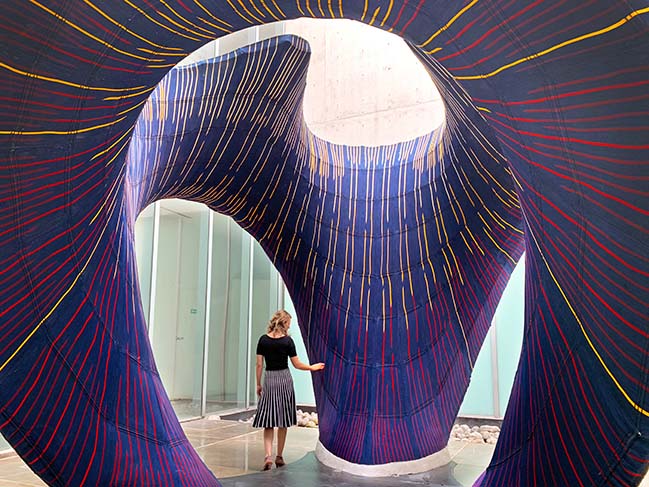
KnitCrete
KnitCrete is an innovative material-saving, labour-reducing and cost-effective formwork system for the casting of doubly curved geometries in concrete. The KnitCrete technology is being developed at ETH Zurich by the Block Research Group in collaboration with the Chair for Physical Chemistry of Building Materials, as part of the Swiss National Centre of Competence in Research (NCCR) in Digital Fabrication.
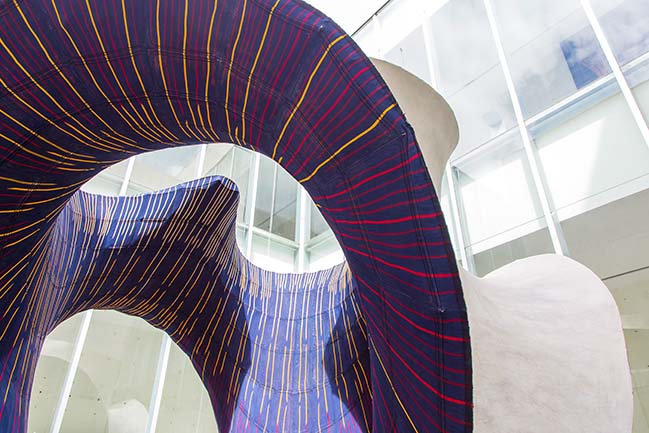
KnitCrete formworks use a custom, 3D-knitted, technical textile as a lightweight, stay-in-place shuttering, coated with a special cement paste to create a rigid mould, and supported by additional falsework elements such as a tensioned cable-net or bending-active splines. Compared to conventional weaving, knitting minimises the need for cutting patterns to create spatial surfaces, allows for the directional variation of material properties, and simplifies the integration of channels and openings, for example, for the insertion of additional formwork elements, insulation, reinforcements, electrical components and technical systems for heating and cooling.
The hybrid and ultra-lightweight KnitCrete formworks are easily transportable, reduce the need for additional supporting structure and scaffolding, and simplify the logistics on the construction site.
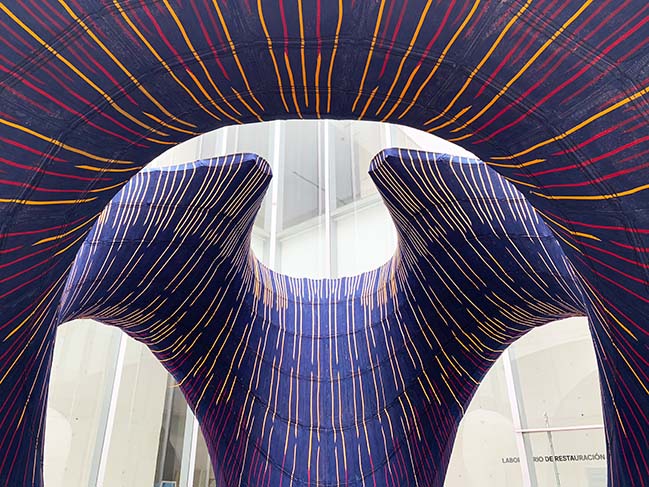
KnitCandela
The 50 sq.m. of textile shuttering of KnitCandela's formwork is comprised of four long strips ranging from 15 m to 26 m in length. Each of the four strips is a seamless, double-layered textile produced as a single piece. Two layers of textile fulfil different tasks. The visible inside is an aesthetic surface that displays a colourful pattern and reveals traces of the supporting cable-net falsework system. The exterior surface fulfils technical requirements by including features for inserting, guiding and controlling the position of additional formwork elements.
The pockets created between the two layers as part of the spatial knitting process are inflated using standard modeling balloons. These inflated pockets become cavities in the cast concrete, forming a structurally efficient waffle shell without the need for a complex, wasteful formwork. Pockets located on this exterior side of the textile have different knit densities to control the inflated shape and openings for the insertion of the balloons, enabling cavities of different dimensions to be created with one standard balloon size.
The soft, colourful textile interior of KnitCandela’s shell and its hard, concrete exterior is visible from all viewing angles. The textile’s striped pattern expresses the knitting fabrication process and the radial symmetry of the shape. This patterning, along with the simultaneous visibility of the soft interior and the hard exterior of the shell enhances the visitor’s spatial experience and the curvatures of the KnitCandela’s form.

[ VIEW MORE ZAHA HADID ARCHITECTS' PROJECTS ]
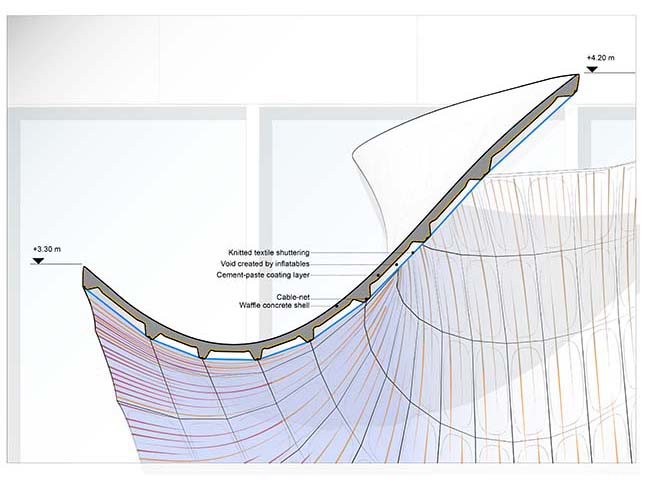
Design
Zaha Hadid Architects: Patrik Schumacher, Principal
ZHCODE: Filippo Nassetti, Marko Margeta, David Reeves, Shajay Bhooshan
BRG: Mariana Popescu, Matthias Rippmann, Tom Van Mele, Philippe Block
KnitCrete technology
BRG: Mariana Popescu, Tom Van Mele, Philippe Block
Chair of Physical Chemistry of Building Materials, ETH Zurich: Lex Reiter, Robert Flatt
Fabrication and construction
BRG: Mariana Popescu, Matthias Rippmann, Alessandro Dell’Endice, Cristian Calvo Barentin, Nora Ravanidou
R-EX: Horacio Bibiano Vargas, Jose Manuel Diaz Sanchez, Asunción Zúñiga, Agustín Lozano Álvarez, Miguel Juárez Antonio, Filiberto Juárez Antonio, Daniel Piña, Daniel Celin, Carlos Axel Pérez Cano, José Luis Naranjo Olivares, Everardo Hernández, Ramiro Tena, Alicia Nahmad Vazquez
Structural engineering
BRG: Andrew Liew, Tom Van Mele
Concrete development
Holcim Mexico: Jose Alfredo Rodriguez, Carlos Eduardo Juarez, Delia Peregrina Rizo
Site construction coordination
R-EX: Alicia Nahmad Vazquez
Exhibition content, coordination, and curation
Zaha Hadid Exhibitions and Archives: Jillian Nishi, Margaratia Valova, Daria Zolotareva, Paz Bodelon, Elena Castaldi, Manon Janssens, Woody Yao
ZHCODE: Leo Bieling, Federico Borello, Filippo Nassetti, Marko Margeta, Henry David Louth, Shajay Bhooshan
BRG: Mariana Popescu, Matthias Rippmann, Noelle Paulson, Philippe Block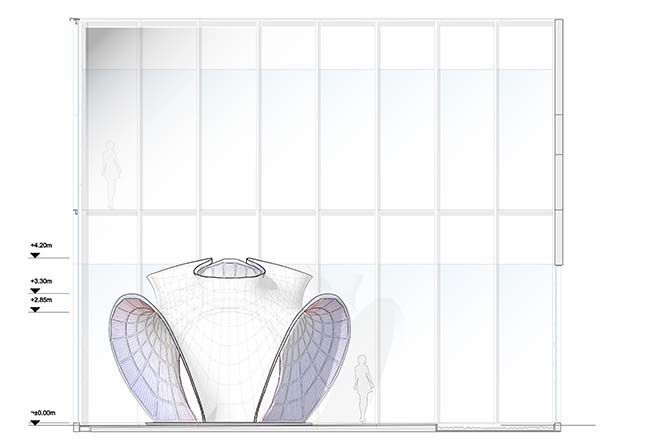

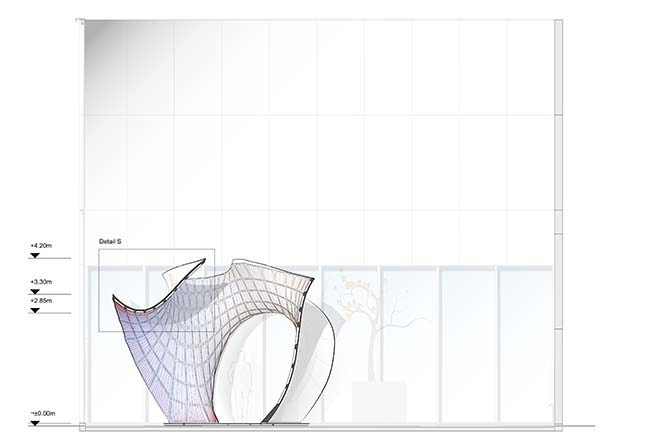
KnitCandela: a flexibly formed, thin concrete shell by Zaha Hadid Architects
10 / 31 / 2018 KnitCandela is a thin, sinuous concrete shell built on ultra-lightweight knitted formwork that was carried to Mexico from Switzerland in a suitcase
You might also like:
Recommended post: GR Garage Toyota Gazoo Racing by eeg arquitectos
